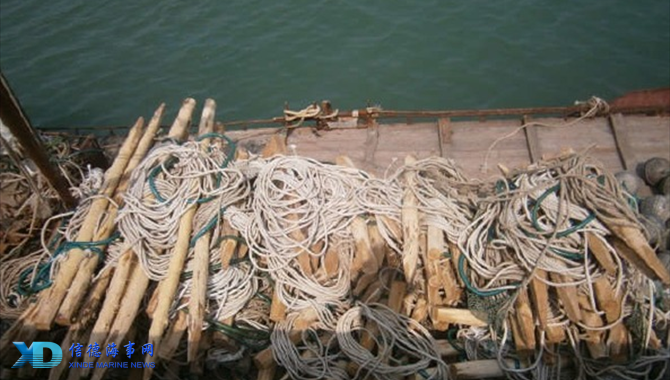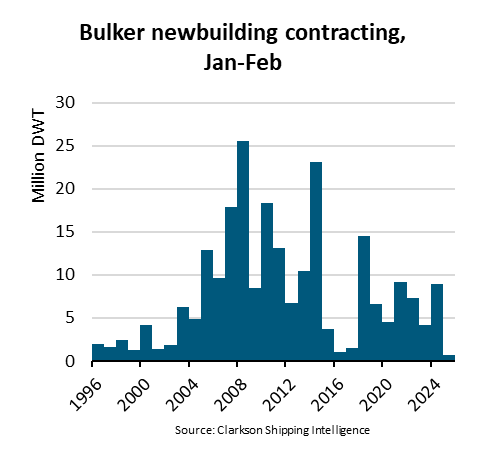
In July 2017 we reported on aquaculture farms and the dangers they pose to safe navigation. Since that time Gard has been involved in 12 claims where fishery farms have allegedly been damaged by commercial vessels. The amounts claimed ranged from USD 3,000 to USD 100,000 and the majority of these incidents occurred in the Lanshan and Rizhao areas where mussel and oyster cultivation form the bulk of aquaculture industry. Our local correspondent, Huatai Insurance Agency, has also indicated in their circular published on 7 August 2018 that they have handled some 50 fish farm collision cases in the aforementioned two areas. We have also been informed that the number of cases off Jintang are rising.
In this insight we discuss the underlying reasons for collisions with fish farms in Chinese waters and the actions available to reduce the risk. Furthermore, we also review the expected course of a typical claim. Finally, we will explain the local cultivation practices including photographs and diagrams.
The primary reasons can be summed up as follows:
a. Inadequate information available to mariners on the location of the fishery farms for incorporating such in passage plans. This can be due to any or all of the following:
-No navigational warnings/notices published by the local MSA.
-Where navigation warnings/notices have been published, it is only available on local MSA’s website and in the Chinese language. Click here to access a sample notice on fish farm in the Rizhao area.
-The published warnings/notices indicate only one position without giving the actual geographical extent of the fishery farm. For an example, click here, where only one coordinate has been given.
-Information sent by the local agent prior to the vessel’s arrival does not provide details of the location of newly established farms.
-VTS and pilots are not aware of newly established farms. It should also be mentioned that some farms may be outside VTS coverage areas and therefore the VTS may not be in a position to advise on these farms.
b. Vessels may not be able to avoid entering fishery farms due to:
-Farms being set up in close proximity to port approaches, main navigable channels and anchorages and thus giving vessels little or no room to maneuver.
-Vessels deviating from the defined or customary navigation channel to avoid immediate danger or due to heavy traffic (including high density of fishing vessels).
-Boundaries not conspicuously marked by the farm owners, therefore members of the bridge team may not be able to see them.
1.Proper lookout is very important.
2.Radars must be set up appropriately for scanning smaller objects, such as by increasing the pulse length and lowering the range scale.
3.Every attempt should be made to stay within the defined or customary navigation channel. Any departure from this should be made only after ascertaining that no farms have been established in those waters.
4.As far as possible the vessel should not proceed at high speed and must have her anchors ready for use should the vessel enter a fish farm.
5.Navigating officers should pay attention to the special notes on charts as they may mention areas where fish farming is prevalent.
6.Known fishery farms must be marked on charts.
7.Local agents must be contacted to obtain up-to-date information on not only the boundaries of the fishery farms but also the preferred track to be followed by the vessel when approaching/exiting port or anchorages.
8.VTS and pilots must also be asked to provide information on the existence of fishery farms along the way and all such communication must be logged.
9.Download local Notices to Marines from the MSA website to know which farms have been newly established. Notices for the Lanshan and Rizhao areas will be published here. The Chinese section of the website is likely to be more up-to-date than the English version of the same site.
10.It is worth mentioning that we have been informed that China MSA is working on removing unauthorized fishery farms and our correspondent, Huatai Insurance Agency, confirms that these works have been completed in the Dalian area.
Whilst the whole process of investigating and settling/rejecting/contesting a fishery farm claim for damage is lengthy and complex, we have summarized the process below.
When a ship enters a fishery farm, the vessel’s identity will be noted and the farm owners will approach their local lawyers, who usually will attach the AIS track of the vessel, downloaded from the internet, to the claim and forward it to the shipowners. A complaint may also be lodged with the local MSA or port authority, and a formal investigation will be conducted onboard. We understand there have been some instances where fishing boats have surrounded the vessel in an attempt to prevent her from departing. In any case unless liability is admitted and the claim settled, a Letter of Undertaking (LOU) would generally be needed to allow the vessel to depart the port. In extreme cases, fishery farm owners may lodge an application in court for the vessel to be arrested. In the following days, a joint survey would usually be arranged to ascertain the extent of damage/losses and to check the coordinates of the farm establishment. This is to establish if they are in accordance with the approval certificate. The joint survey will also look at the specific area where the damage occurred to ensure it matches the actual track of the vessel.
Provided the certificates are in order, although in some instances a claim might be allowed even in their absence, the fishery farm owners are generally allowed to claim for loss of income, cost of restoration, including labour costs and cost of damage to equipment/facilities. Where the restoration can be done in the seedling season loss of income is not claimable.
In the majority of incidents Gard has been involved in this year, the fishery farm owners held valid sea area use and aquaculture certificates and were therefore legally entitled to establish fishery farms in the relevant locations. They had, however, not applied to the local MSAs for promulgating information for the benefit of ships and had not properly marked the farm boundaries. Many of the farm owners had deployed 1-2 working boats to look after the farms but these boats were not equipped to warn approaching vessels of the presence of fishery farms or their extent. For these reasons, in a few instances – mostly limited to those taking place at night time or when visibility is poor – local Chinese courts considered the fishery farms owners to have contributed to their own loss, reducing the vessel’s liability by some 20%-30%. For incidents taking place in the daytime, their understanding is that the farms can be seen visually or by a properly set-up radar.
Each farm is divided into sub-areas consisting of longlines. These culture lines are usually set in a NNW-SSE direction against the current. We provide below a brief description of how the mussel and oyster farms are setup with supporting diagrams/photographs towards the end of this article.
Mussel cultivation: The harvest season starts around December and continues until May-June, upon completion of which mussel spats are planted again. Mussel cultivation may be done using either a bottom culture system or a suspension system. The latter produces a higher yield and all the mussels have an even growth rate with high meat to shell ratio. For these reasons a suspension system, socks suspended by longlines, is the preferred method amongst local Chinese fishery farms. Floatation devices represent a major cost of the mussel operation and most commonly used floats are Styrofoam lobster buoys coated with paint or plastic floats. The most common anchoring system consists of wooden stakes installed at the end of each line. Rizhao is one of the biggest mussel culture bases in China.
Oyster cultivation: The culture facility is not very different from that for mussel cultivation. The only difference is that instead of sock suspenders, cages with layered trays are used for oyster cultivation. The planting season is around August-September and harvesting around the Chinese Lunar New Year.
Conclusions
Should a Member’s vessel collide with a fishery farm or receive a notification by a farm owner alleging damage, immediate assistance should be sought from Gard or our correspondents.
Sources: GARD
Please Contact Us at:
 Ningbo Containerized Freight Index Weekly Commentar
Ningbo Containerized Freight Index Weekly Commentar  Ningbo Containerized Freight Index Weekly Commentar
Ningbo Containerized Freight Index Weekly Commentar  Ningbo Containerized Freight Index Weekly Commentar
Ningbo Containerized Freight Index Weekly Commentar  BIMCO Shipping Number of the Week: Bulker newbuildi
BIMCO Shipping Number of the Week: Bulker newbuildi  Ningbo Containerized Freight Index Weekly Commentar
Ningbo Containerized Freight Index Weekly Commentar  Ningbo Containerized Freight Index Weekly Commentar
Ningbo Containerized Freight Index Weekly Commentar